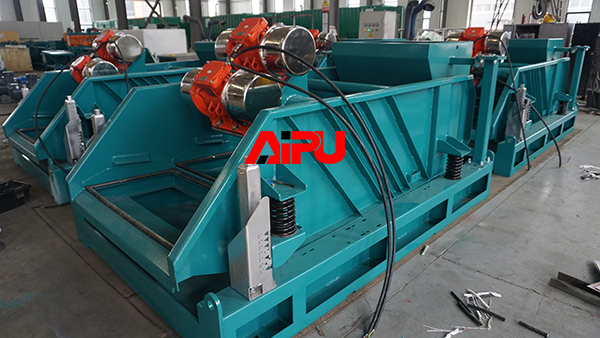In the demanding world of drilling operations, whether for oil, gas, water wells, or geothermal energy, maintaining the properties of the drilling fluid (commonly called "mud") is absolutely critical. This is where the shale shaker plays an indispensable role. As the primary and often first stage of solids control equipment on a rig, its function is vital for efficiency, safety, and cost-effectiveness.
The Core Function: Separation
Simply put, a shale shaker's primary job is to separate drilled solids (cuttings) from the drilling fluid as it returns to the surface from the wellbore. As the drill bit cuts through rock formations, it generates fragments of various sizes – from large cuttings to fine particles. This mixture of solids and liquid (the drilling mud) is pumped back up the annulus to the surface.
How It Works: Vibrations and Screening
Inflow: The mixture of drilling fluid and cuttings enters the shaker via the flow line, typically distributed across the top of the machine.
The Screen Deck: The heart of the shaker is its vibrating screen deck(s), covered with replaceable mesh screens. These screens have precisely sized openings.
Vibration: Powerful motors generate high-frequency, linear or elliptical vibrations. This vibration:
Conveys Solids: Moves the larger solids (cuttings) across the screen surface towards the discharge end.
Liquid Passing: Allows the liquid drilling fluid and particles smaller than the screen openings to pass through the screen mesh.
Separation: Solids Discharge: The separated cuttings (now relatively dry) are vibrated off the end of the screen deck into a collection bin or conveyor for disposal.
Fluid Return: The cleaned drilling fluid (with finer solids still present) passes through the screens into a holding tank (the possum belly or mud tank) below. This fluid is then ready for further processing by other solids control equipment (like desanders, desilters, and centrifuges) or for immediate recirculation down the hole.
Why is this Separation So Crucial?
Protects Downstream Equipment: Removing larger cuttings first prevents rapid wear and clogging of more sensitive and expensive equipment like desanders, desilters, pumps, and centrifuges.
Maintains Drilling Fluid Properties: Drilling fluid is expensive and engineered with specific properties (density, viscosity, gel strength, fluid loss control). Excessive solids degrade these properties, leading to:
Increased mud weight (risking formation damage or lost circulation).
Higher viscosity (reducing drilling rate and requiring more pump pressure).
Poor hole cleaning (increasing the risk of stuck pipe).
Reduced lubricity (increasing torque and drag).
Thicker filter cakes (risking differential sticking).
Reduces Costs: Efficient solids removal extends the life of the drilling fluid, significantly reducing the volume of new fluid needed and the cost of additives. It also minimizes waste disposal volumes.
Improves Drilling Efficiency: Cleaner mud allows for faster drilling rates (ROP), better hole stability, and smoother overall operations.
Enhances Safety: Properly processed mud helps maintain wellbore stability and reduces risks associated with high-pressure zones or kicks. Dryer cuttings disposal is also safer and more environmentally manageable.
Environmental Compliance: Efficient separation ensures cuttings are handled appropriately, and fluid losses are minimized, aiding in environmental protection efforts.
The Importance of Screen Selection
The effectiveness of a shale shaker is heavily dependent on the screen mesh size used. Finer meshes remove more solids but have lower fluid throughput and are more prone to blinding (clogging). Coarser meshes handle higher flow rates but allow larger particles through. Selecting the right screen for the specific drilling phase and mud properties is key.
Conclusion
The shale shaker is far more than just a vibrating screen; it is the essential first line of defense in drilling fluids management. By efficiently removing the majority of drilled cuttings immediately as the fluid returns to the surface, it protects valuable drilling fluid properties, safeguards downstream equipment, reduces operational costs, enhances drilling efficiency, and contributes significantly to overall safety and environmental compliance. Without effective shale shakers, modern drilling operations would be significantly less efficient, more expensive, and riskier.
If you're looking for high-performance, reliable shale shakers to optimize your drilling operations, consider sourcing from Aipu Solids Control! Aipu offers a range of robust and efficient shale shakers designed to handle demanding conditions and deliver superior solids separation, helping you maximize fluid performance and minimize operational costs. Explore Aipu's solids control solutions today!

